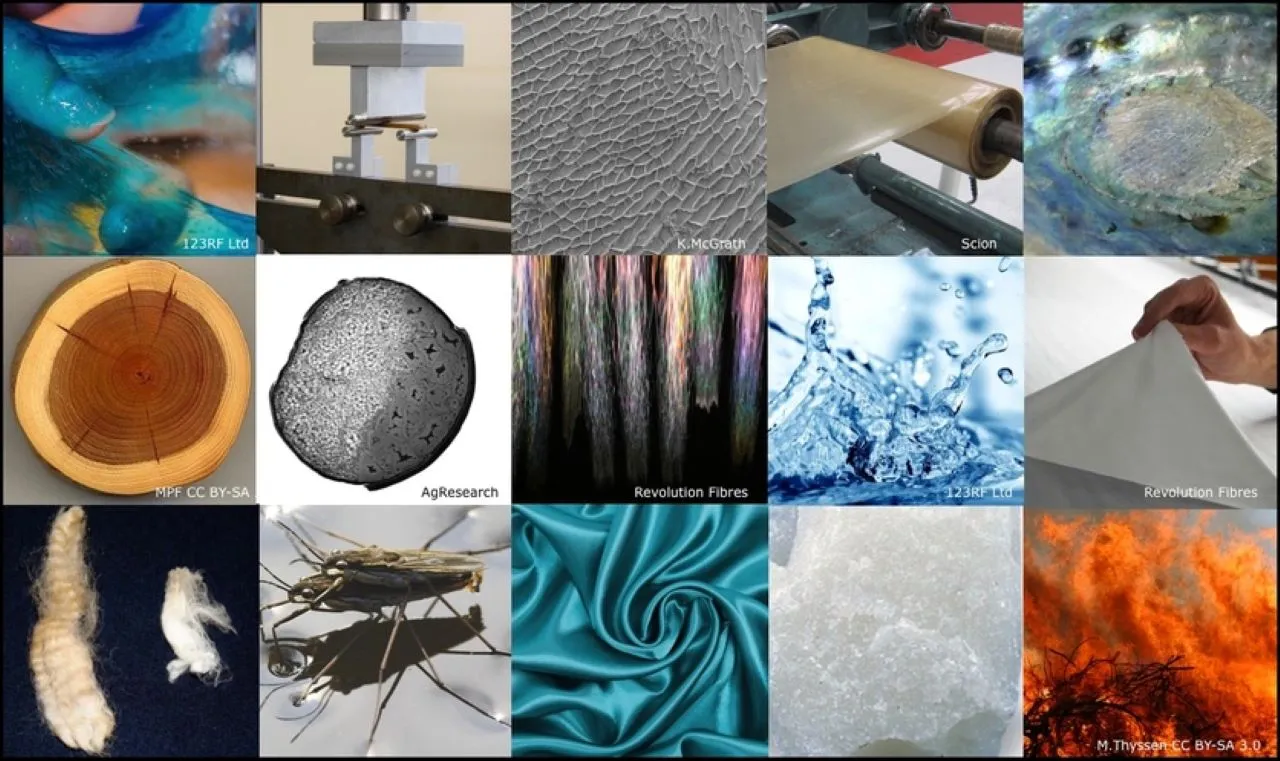What Does Property Mean In Science?
Properties are a fundamental concept across all fields of science. From physics to chemistry to biology, understanding properties is key to understanding matter and the natural world.
If you’re short on time, here’s a quick answer to your question: A property in science refers to any trait, quality, or characteristic that an object or substance has.
In this comprehensive guide, we will explore the full meaning of properties in science, looking at definitions from various fields of study and examples of different types of properties.
Defining Properties in Science
In the field of science, properties refer to the characteristics that can be used to describe an object or substance. These properties help scientists identify and differentiate between different materials, understand their behavior, and make predictions about their interactions.
By studying the properties of various elements and compounds, scientists can gain a deeper understanding of the natural world and develop new technologies and innovations.
Characteristics of an Object or Substance
Properties in science can include a wide range of characteristics that help define an object or substance. These characteristics can include physical properties such as color, shape, size, density, and texture.
For example, when examining a rock, scientists may observe its color and texture to determine its composition and origin. Chemical properties, on the other hand, describe how a substance reacts with other substances.
This can include its reactivity, acidity or alkalinity, and its ability to conduct electricity.
Properties can also include more abstract concepts such as temperature, pressure, and mass. These properties are known as measurable properties and can be quantified using scientific instruments. By measuring these properties, scientists can gather valuable data and analyze it to draw conclusions about the behavior of a substance or object.
Can Be Qualitative or Quantitative
Properties in science can be classified as either qualitative or quantitative. Qualitative properties are descriptive in nature and do not involve numerical measurements. They provide information about the qualities or characteristics of an object or substance.
For example, the color of a flower or the smell of a perfume are qualitative properties.
On the other hand, quantitative properties involve numerical measurements and can be expressed with units. These properties provide precise and objective information about the quantity or amount of a certain characteristic.
For example, the length of a pencil or the weight of an object are quantitative properties. By quantifying properties, scientists can compare and analyze data more effectively, leading to a better understanding of the natural world.
To learn more about the properties of different elements and compounds, you can visit reputable scientific websites such as www.periodictable.com or pubchem.ncbi.nlm.nih.gov. These websites provide comprehensive information about the properties of various substances and can be valuable resources for further exploration.
Types of Properties in Physics
Physical Properties
Physical properties in physics refer to characteristics that can be observed or measured without changing the substance’s identity. These properties include attributes like color, shape, size, density, and mass.
For example, the physical property of an object’s density can be determined by dividing its mass by its volume. Physical properties are essential in understanding and describing the behavior of matter.
Chemical Properties
Chemical properties relate to how a substance interacts with other substances and undergoes chemical changes. These properties describe the substance’s ability to react, its stability, flammability, and toxicity.
For instance, the chemical property of iron is its ability to react with oxygen to form rust. Understanding chemical properties is crucial in determining how substances will behave in various chemical reactions.
Mechanical Properties
Mechanical properties refer to a substance’s behavior under applied forces or loads. These properties include attributes such as strength, hardness, elasticity, and toughness. For example, the mechanical property of a material’s strength determines its ability to withstand external forces without deformation or breaking.
Engineers and designers rely on mechanical properties to select suitable materials for specific applications.
Thermal Properties
Thermal properties describe how a substance responds to changes in temperature. These properties include attributes like thermal conductivity, specific heat capacity, and coefficient of thermal expansion.
For instance, the thermal property of a material’s conductivity determines how efficiently it transfers heat. Understanding thermal properties is vital in fields such as thermodynamics and heat transfer.
Optical Properties
Optical properties relate to how a substance interacts with light. These properties include attributes like transparency, reflectivity, and refractive index. For example, the optical property of glass is its transparency, allowing light to pass through.
Optical properties play a significant role in fields such as optics, photonics, and materials science.
Electrical Properties
Electrical properties describe the behavior of a substance under the influence of an electric field or current. These properties include attributes like conductivity, resistivity, and dielectric constant.
For instance, the electrical property of copper is its high conductivity, making it ideal for electrical wiring. Understanding electrical properties is crucial in fields such as electrical engineering and electronics.
Properties in Chemistry
Properties in chemistry refer to the characteristics or attributes of substances that can be observed or measured. These properties help scientists understand the behavior and interactions of different substances.
In the field of chemistry, properties can be categorized into several types, including physical properties, chemical properties, atomic properties, and molecular properties.
Physical Properties
Physical properties are those that can be observed or measured without changing the chemical composition of a substance. These properties include characteristics such as color, odor, density, melting point, boiling point, solubility, and conductivity.
For example, the physical property of boiling point determines at what temperature a substance changes from a liquid to a gas.
Physical properties are essential in identifying and classifying substances. They can be used to distinguish one substance from another and to determine the purity of a substance. Scientists often use various techniques and instruments to measure physical properties accurately.
Chemical Properties
Chemical properties describe how a substance undergoes a chemical change or reacts with other substances. These properties involve the ability of a substance to undergo chemical reactions, such as combustion, oxidation, or decomposition.
Chemical properties are crucial in understanding the reactivity and behavior of substances.
For example, the chemical property of flammability indicates whether a substance can burn or not. Similarly, the property of acidity or alkalinity describes the ability of a substance to react with acids or bases.
Atomic Properties
Atomic properties are specific to individual atoms and are related to their structure and behavior. These properties include atomic radius, ionization energy, electronegativity, and electron configuration.
Atomic properties play a significant role in understanding the behavior of elements and their compounds.
For instance, the atomic radius determines the size of an atom, which affects its chemical reactivity. The ionization energy represents the energy required to remove an electron from an atom, which influences its ability to form ions.
Molecular Properties
Molecular properties are associated with the structure and behavior of molecules. These properties include molecular weight, polarity, bond length, bond angle, and molecular shape. Molecular properties are essential in understanding the physical and chemical properties of compounds.
For example, the molecular weight of a compound determines its mass and affects its physical properties, such as boiling point and solubility. The polarity of a molecule determines its ability to dissolve in polar or nonpolar solvents.
Understanding the different properties in chemistry is crucial for scientists to study and manipulate substances effectively. By analyzing and interpreting these properties, scientists can make significant advancements in various fields, such as medicine, materials science, and environmental research.
Properties in Biology
In the field of biology, properties refer to various characteristics or attributes that help us understand and describe living organisms. These properties can be categorized into different types, including physical, chemical, physiological, anatomical, and genetic properties.
Physical Properties
Physical properties in biology refer to the observable characteristics of an organism that can be measured or assessed without altering its chemical composition. These properties include size, shape, color, texture, and weight.
For example, the physical properties of a bird may include its wingspan, beak length, and feather coloration. These properties provide valuable insights into an organism’s structure and function.
Chemical Properties
Chemical properties in biology relate to the composition and behavior of substances within an organism. These properties involve the interactions and reactions of molecules, such as enzymes, proteins, and DNA.
Understanding the chemical properties of biological molecules is essential for comprehending various biological processes, including metabolism, DNA replication, and protein synthesis.
Physiological Properties
Physiological properties encompass the functions and processes that occur within an organism. These properties include respiration, digestion, circulation, and reproduction. For example, the physiological properties of a human may include heart rate, blood pressure, and hormone levels.
Studying physiological properties helps us understand how organisms maintain homeostasis and carry out essential life functions.
Anatomical Properties
Anatomical properties refer to the structure and organization of an organism’s body parts. These properties include the arrangement of bones, muscles, organs, and tissues. Anatomical properties provide insights into the form, function, and evolutionary relationships of organisms.
For instance, the anatomical properties of a plant may include the arrangement of leaves, stems, and roots.
Genetic Properties
Genetic properties involve the inheritance and transmission of genetic information from one generation to another. These properties include the genetic makeup, gene expression, and inheritance patterns of organisms.
Understanding genetic properties is crucial for studying inheritance, genetic disorders, evolution, and genetic engineering. Genetic properties can be studied using various techniques, including DNA sequencing and genetic mapping.
By studying and analyzing these different properties, scientists gain a deeper understanding of the complex world of biology. These properties help us unravel the mysteries of life, explore evolutionary relationships, diagnose diseases, and develop innovative solutions for various biological challenges.
Conclusion
In conclusion, properties are fundamental descriptors used ubiquitously across scientific disciplines to characterize matter and living organisms.
By thoroughly understanding what properties are and the many types that exist, you gain a fuller appreciation for how scientists study and classify the natural world.







